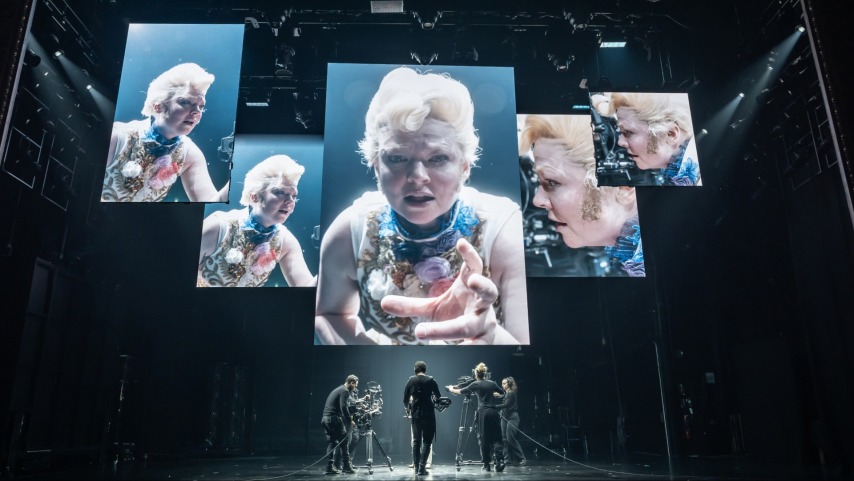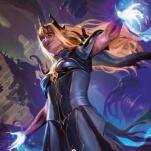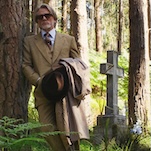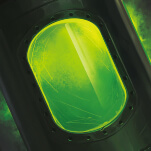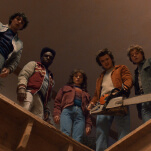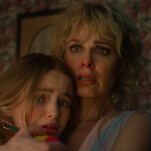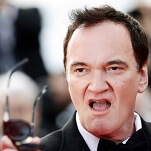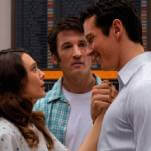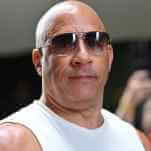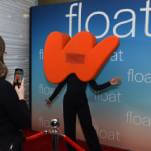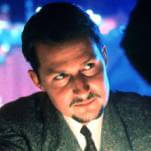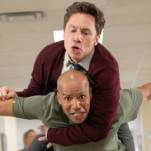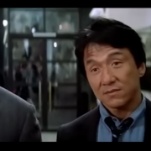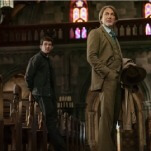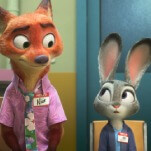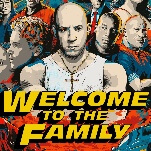An adjective that kept coming to mind after the play’s conclusion was “athletic.” As the story builds, particularly in the second half when Dorian decides to hide his picture away in the attic and live as hedonistically as possible, Snook scarcely gets a second to breathe. At first, it’s played for anachronistic laughs as Dorian Facetunes himself while Donna Summer’s “I Feel Love” plays. But soon the walls start to close in, taking Dorian on an ill-fated hunting trip and through an opium den. For the latter, the camera follows Snook through the backstage and bowels of the theater as she delivers what is essentially an unbroken, 20-plus-minute monologue. These sequences are so frantic that when they abruptly stop it feels like both a high-speed crash and an Olympic athlete sticking the landing after a Yurchenko vault.
The screens on stage contribute to this Olympic feel, as if you’re watching four different events happen simultaneously. In the first scene, Snook really is on stage only with her camera crew (who should be considered supporting performers, if not actors) and adjusting her voice and face to indicate when she’s performing as different characters. Eventually, though, a series of vertical screens enter the proscenium as new portraits entering the gallery. They feature Snook in full costume as other characters, which allows for the anchor character of the scene on stage (most often, but not always, Dorian) to act off of their recorded bits. The screens were initially jarring and obtrusive, but the skill and timing used to make this Rube Goldberg contraption work quickly paves over any initial skepticism.
Using screens and pre-recorded video on a theatrical stage is often difficult to pull off (I tend to be skeptical of them). They can seem counter to the mission of live theater, and they’re often used in lieu of practical sets, which is frankly just annoying when the cheapest tickets are over $100. But at least two shows this season have used them to great effect by going beyond gimmickry and elevating the themes of the text. The recent Nicole Scherzinger-led production of Sunset Boulevard has one big backdrop that functions both as a movie screen for Norma Desmond and a jumbotron for its pop star lead. Here, Norma literally looms large over the action, her image a threat to the scenes unfolding before it. For a story about a fading silent movie star, this inclusion makes perfect sense.
Likewise, The Picture Of Dorian Gray is a story about identity and its fracturing. As more characters appear on the screens, it conveys their entry into the gallery or archive. Dorian’s selfishness and delusions place every other person in the literal background of his story while also rendering them as extensions of himself. They can only watch helplessly as Dorian makes the same mistakes, night after night and year after year. Though they move, they become as static as a portrait. (Well, a portrait that isn’t Dorian’s.) And because they’re all played by the same person, the production leaves Dorian as the butt of a sick joke; he is hardly the exception that he believes himself to be.
Snook doesn’t play Dorian as a joke, though, even when the material veers toward outlandish. When she portrays the utter nightmare of his own creation as such, many of the screens fade away, as do pieces of her costume. After Dorian’s demise, Snook is left standing, performing the final lines of Oscar Wilde’s book. She has been emotionally ravaged before our eyes, fragmenting herself into so many pieces that you have to wonder how one person was able to hold all of that. It would be a disservice to the hard work that made The Picture Of Dorian Gray happen to call the production a miracle. But what Snooks pulls off is alchemy.
